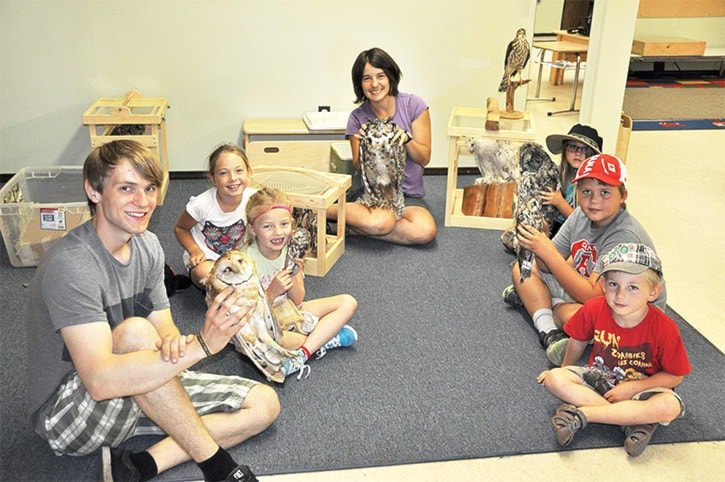Paula Laita is an environmental educator at Scout Island Nature Centre who brings her passion for the natural world into every encounter with a child.
Her job started two years ago when she moved to Williams Lake and helped as a volunteer with environmental programs for kids.
She explains that she chose Williams Lake because of the lake and the beautiful protected marsh area, adding that there are also a lot of outdoor activities to do here.
Before moving to Canada she taught in Spain as an environmental educator at summer camps during her university years.
She received her master’s degree in translation and intercultural communication and is currently working on her doctorate degree.
“I could have gone into teaching, but I prefer to teach outside the classroom in a more informal setting – teaching by experimenting. I love teaching here,” Laita says.
The summer program provided two sessions on Tuesdays for children ages three to eight with crafts, games, walks, hands-on learning and hands-on fun.
Continuing through the year Scout Island also has the NatureKids B.C. program for kids sges five to 12 years old.
Formerly known as the Young Naturalists Club of B.C., the club has activities and field trips once a month.
“I recently did a field trip with our club members and their parents to my bluebird route,” Laita says.
“This is a program started over 20 years ago where people put up bluebird houses because there were a lot of grasshoppers in the farm fields. Instead of using pesticides, they thought they could use biological control. They brought the bluebirds back, and that got rid of the grasshoppers. They started with 300 boxes, and now there are more than a thousand.”
She says the Williams Lake Field Naturalists take care of the bird houses. Members each take on a certain number of boxes to maintain and monitor.
Monitoring includes checking to see how many eggs are laid and how many chicks hatch.
“I took my group on a field trip to monitor my boxes,” Laita says. “I have 59 boxes: we did about 15 of them. We counted the chicks and collected all the information.”
She adds that NatureKids B.C. at Scout Island also holds family events and sometimes combines them with club activities.
“It’s great for parents and kids to learn together. Last year in August we took the club members and their families to some nearby caves to listen to bats. New members are always welcome!
“It’s so important for kids to be outdoors.
“You can learn a lot by observing, touching and being close up to nature. Observation is a great way to learn: what do you see, hear, touch and smell?
“Connecting kids to nature is important because when you know about something you’re more likely to care about it and want protect it,” Laita says.
Recently she says the group studied bird beaks, learning about all the different types of beaks and how they work.
Another day they studied owls and another day learned all about feathers.
“Getting to know about nature, about our local area, we try to teach the kids what we have here so they’ll like it and love it and want to take care of it,” she continued.
“Today there are more distractions than when I was a kid and we didn’t even have computers. There is a lot of information out there, thanks to technology, but that’s not the same as a hands-on encounter. You don’t get to touch. That’s why kids need to get outside and why our kids love about being at Scout Island, the chance to really connect with nature.”
For more information about ongoing programs and activities at Scout Island, including how to join NatureKids B.C., visit www.scoutislandnaturecentre.ca or phone 250-398-8532.
